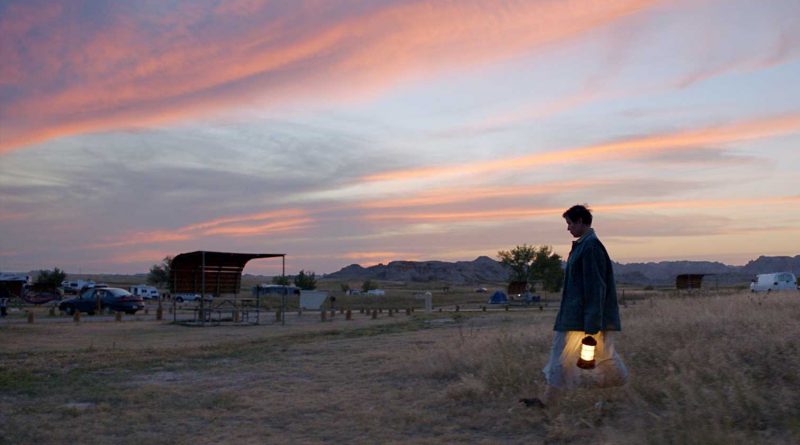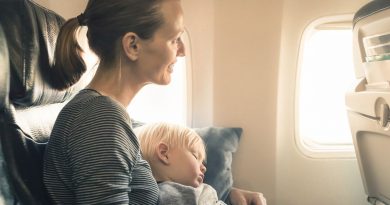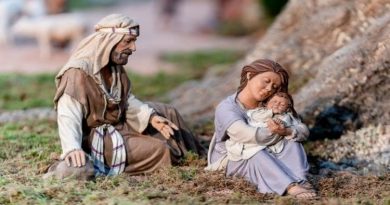On Location: ‘Nomadland’ Is a Love Letter to America's Wide Open Spaces
All products featured on Condé Nast Traveler are independently selected by our editors. If you buy something through our retail links, we may earn an affiliate commission.
Watching Nomadland feels like a kind of freedom. Shot in five states—South Dakota, Nebraska, Arizona, Nevada, and California—the film follows Fern, a modern-day “nomad,” played with graceful grit by Frances McDormand. After the death of her husband and the economic collapse of her town, she pinballs around the American west in search of work, living out of a camper van named Vanguard, and meeting other itinerant souls along the way. Some of them, including Linda May and Swankie, are real-life nomads who play themselves; both were written about in Nomadland: Surviving America in the Twenty-First Century, journalist Jessica Bruder’s book on which the movie is based, which tracks a group of transient, older Americans as they follow a trail of mostly seasonal jobs in the wake of the Great Recession. But if those real people are what give the movie its heart, it’s the landscapes, with their lonely, limitless beauty—from the striated rock formations of South Dakota’s Badlands National Park to the redwoods of northern California’s Mendocino coast—that give it its contours.
“Having grown up in the cities of China and England, I’ve always been deeply drawn to the open road—an idea I find to be quintessentially American—the endless search for what’s beyond the horizon,” says director Chloé Zhao in the movie’s production notes. “I tried to capture a glimpse of it in this movie, knowing it’s not possible to truly describe the American road to another person. One has to discover it on one’s own.” We spoke with Zhao for ourselves, and talked about what it was like to revisit the film—now out in wide release in theaters and streaming on Hulu—during the pandemic, and where she hopes to go next once the world opens up again.
The movie, which has so much beautiful scenery, is coming out in a moment where people can’t really get out and explore. What is it like to go back and watch it now?
It was definitely an experience I did not expect to have, both physically and emotionally—and also spiritually. I was editing Nomadland when [everything] shut down. We hope that the film reminds people of just how beautiful this country is; and hopefully, when this is over, we can go back to the way we used to live and they’ll consider getting out there more, to see places right outside their own back door.
While you were filming this, you were actually living out of a van. What was that like? Had you ever done anything like that before?
I’ve done quite a bit of it, because I was traveling so much for so long. When I was making my first two films [Songs My Brothers Taught Me and The Rider], I spent a lot of time all over the country. And before the prep period for Nomadland, it was much more of what you’d call “van life.” I have a camper van called Akira, and when we’d go out there to see the folks in Jessica Bruder’s book and also to location scout, we were living out in the van. Then while we were shooting, sometimes we slept in the van, but most of the time we were in hotels. Some were probably not as comfortable as the van.
The thing is, the best way to go about living the “van life” is if you’re on your own schedule. That’s the whole point of it. Because things do take longer and unexpected things happen and you can’t really do that when you’re making a film.
Can you talk about some of the movie’s filming locations? Had you ever visited those places before?
The locations in this film are divided into three categories. One is [locations] from Jessica’s book. She had done a lot of incredible research; [her book] really follows one year of where the [the workers] would go. That’s very much from her book. And then there are ones from Frances, for example, her love for the Pacific coast, her love for the redwoods—that definitely worked into the film. I have my own love for South Dakota, for the Badlands, which became a big part of it as well. So it was really a collaboration in terms of location.
Empire, Nevada, in the Black Rock Desert, and Quartzsite, Arizona—these towns were really the anchor for this movie. Going to these two places made me realize I had a movie. The character’s backstory is tied to Empire, and the place that she goes to, the first step to this journey, is Quartzsite. So these two are very special, too.
What were some of your favorite places to film?
We’d filmed in so many flat and dusty places, ones that were usually very dry. And then suddenly we got to the Pacific Coast and just smelling the sea air, feeling the humidity, and seeing the redwoods—it was very nice. That was in the scene where Fern was visiting Dave.
There was also the sunset and the sunrise in the desert in Arizona—there’s just nothing like it. We were filming the scene with Bob Wells, who really started the movement of Rubber Tramp Rendezvous, which is a gathering of people with this nomadic life every year in Quartzsite. Filming that scene between him and Fern where they’re talking about personal things with each other as the sun set in the desert of Arizona, that was a very special moment.
Are there any destinations you’d recommend viewers visit for themselves?
For people who are out there traveling in the winter, definitely go visit Quartzsite, Arizona. It’s a very special place; it’s one of the wildest towns that I’ve been to. Imagine that that’s the place that nomads gather once a year—you really want to see what it’s like. It’s special. The town actually got started, I think, when someone’s car broke down and they just decided to sell their stuff on the side of the road, and then it became a swap meet kind of place. Now, if you go every winter, you have the largest gem and mineral show in the country, and also one of the largest RV shows. You could be walking into a store that has an ocean of gemstones. Those stores are just everywhere in Quartzsite. The Badlands of South Dakota also has a history that’s really special to this country. There’s an out-of-this-world feeling you have when you’re there.
What places are on your list, particularly in America, that you want to visit when conditions improve?
I can’t wait to go back to the Plains—to Wyoming, Montana, South Dakota. I dream about it every day—it will be the first place I go, as soon as I can. In terms of places I haven’t been to, or haven’t really explored, I would say Appalachia, and the mountain region of West Virginia, and the Smokies. I would love to go someday.
Source: Read Full Article



